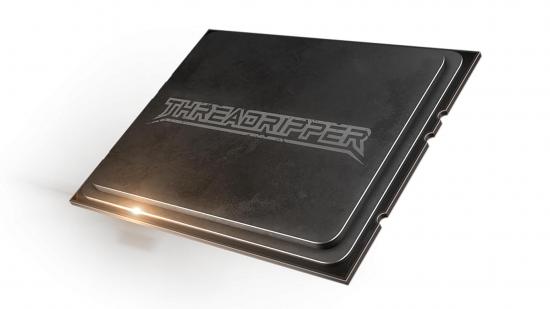AMD has removed 3rd Gen Threadripper HEDT processors from its 2019 roadmap. While the company had previously touted its core-happy CPUs sometime in late 2019, following AMD Ryzen 3000, the latest investor presentation rids all sign of the HEDT processors from its yearly roadmap.
AMD will release its Ryzen 3000 CPUs for desktop clients (us gamers) over at Computex towards the end of the month. These processors were originally expected to precede Threadripper later in the year, which would utilise the same Zen 2 architecture and chiplet design, offering up increased core counts and multithreaded workstation chops. But all evidence of a 3rd Gen Threadripper release later this year has since been scrubbed from the company’s plans – and the change looks to have been intentional.
The reasoning behind the delay – if you can call it such, given the processors weren’t officially announced – is not yet known. But if we open the doors to a little conjecture, the move could be down to 7nm manufacturing constraints. AMD is opting for TSMC’s 7nm process node across its upcoming product stack. That includes almost all of its CPU silicon – barring GlobalFoundries 14nm I/O chiplet – and its AMD Navi GPUs.
TSMC’s ability to match the production volume necessitated by such major product launches has been brought into question over the last few months. Reports surfaced recently allude to AMD ramping up orders with the pure-play foundry while it still has capacity leftover, i.e. before Apple swoops in and claims it all for the iPhone. That move could’ve potentially eased some of the congestion before it stood a chance to negatively impact the company.
Desktop chops: These are the best CPUs for gaming
However, the burgeoning demand may still have some effect on AMD’s immediate roadmap. And it looks like Threadripper may have gotten the chop (via Momomo_US) to ensure the company’s critical launches go off without a hitch.
AMD Investor Presentation May 2019
3rd Gen Ryzen : MID-YEAR
3rd Gen Ryzen TR : delete
Zen 3 : On Track
Zen 4 : In Design
EPYC Rome : Expected Q3 2019 pic.twitter.com/0xF8Ghcn6P— 188号 (@momomo_us) May 3, 2019
After all, AMD EPYC Rome server processors are also set for a Q3 release. These mammoth CPUs will often claim eight Zen 2 chiplets for a total of 64 cores, and will almost certainly be of the highest priority to the red team.
But not to worry, TSMC expects most of its clients to move swiftly onto 7nm+ and beyond processes as soon as they hit volume production. That should take the pressure off AMD until it too makes the change.
What does this mean for AMD Ryzen 3000?
There’s also precedent for AMD to roll out its first 16-core client desktop processor with the Ryzen 3000-series.
Lisa Su confirmed what many suspected after their first glimpse of the Ryzen 3000 AM4 package: there’s plenty of space for two eight-core chiplets under its heat spreader. If AMD is indeed planning on putting together a high-core count desktop CPU, that cuts into at least a little of Threadripper’s audience.
Sure, PCIe lanes and increased memory support are some of AMD Threadripper’s most sought after qualities, but at least down towards the entry-level the high-core count mainstream chips could pose a threat to some of AMD’s HEDT processors.
It’s not yet guaranteed that AMD will roll out a 16-core chip immediately, or ever for that matter. But with Threadripper now postponed, there may be more impetus than ever for AMD to offer a dual-chiplet, 16-core processor in the client space. All without increasing the chiplet requirements over a 10- or 12-core Ryzen CPU – pending good yields.
In other news, Zen 3 on 7nm+ is on track for what is widely assumed to be a 2020 release window. And Zen 4, whether on TSMC’s 6nm, 5nm, or some other process entirely, is reportedly in its formative stages, referred to as “in design” by AMD.

